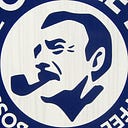Member-only story
Nerd Processor
Forget The Matrix 4: We Need a Speed Racer Sequel
A paean for the Wachowskis’ greatest, most misunderstood masterpiece
 Last week, it was announced that The Matrix would be getting a fourth installment, with stars Keanu Reeves and Carrie Anne-Moss reprising their roles and franchise co-creator Lana Wachowski returning as director. Despite the fact that no one particularly liked the first two sequels, this new movie will probably make a billion or so dollars, despite the fact that humanity does not need another Matrix movie. Instead, it needs a sequel to another Wachowski movie: Speed Racer.
Last week, it was announced that The Matrix would be getting a fourth installment, with stars Keanu Reeves and Carrie Anne-Moss reprising their roles and franchise co-creator Lana Wachowski returning as director. Despite the fact that no one particularly liked the first two sequels, this new movie will probably make a billion or so dollars, despite the fact that humanity does not need another Matrix movie. Instead, it needs a sequel to another Wachowski movie: Speed Racer.
If you don’t remember the 2008 film, based on the 1960s cartoon of the same name (which was an early Japanese anime series titled Mach Go Go Go before it was imported to the United States), I understand. Given that Speed Racer made only $43 million in the United States, chances are you’re one of many who didn’t bother to watch the film, and I honestly don’t blame you. The cartoon was over 40 years old when the movie premiered in 2008 — long past its nostalgia expiration date. Critics also panned it, and the result was a major flop. Even I didn’t bother to see it, instead waiting to get it on DVD via Netflix, back in those halcyon days.

